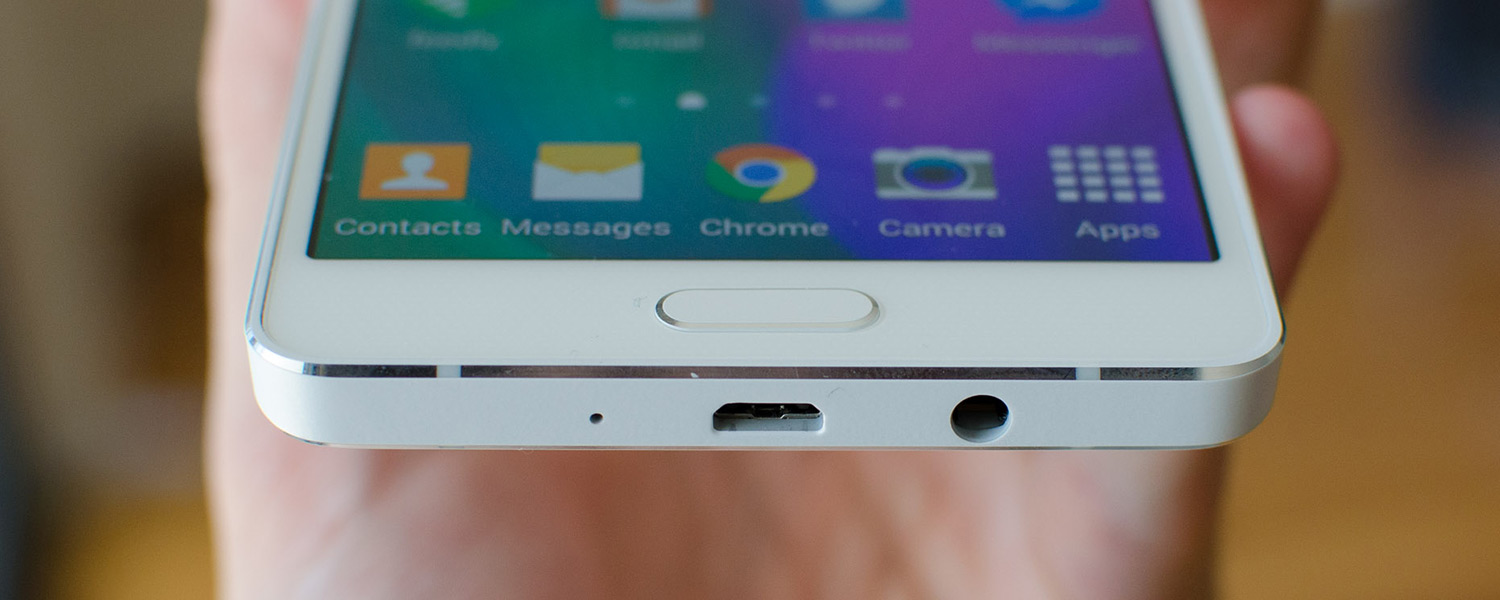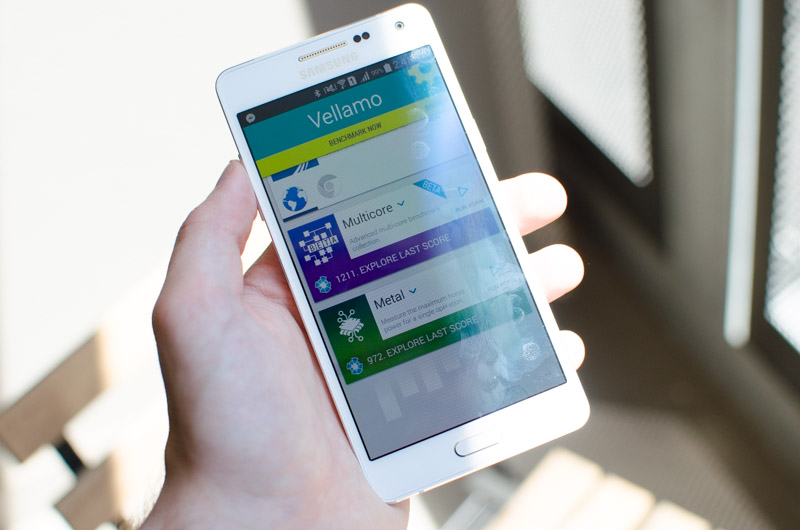Display and Software
The display Samsung has used for the Galaxy A5 is a 5.0-inch 1280 x 720 Super AMOLED, which equates to around 294 pixels per inch. Although the resolution is the same as the display used on the Galaxy Alpha, the A5 gets a small size bump from 4.7 to 5.0 inches, which makes the display 13% larger in total.
Quality-wise, the Galaxy A5's display has been produced using the same generation of AMOLED technology as the Galaxy Alpha and Galaxy Note 4. These are some of the best AMOLED displays I've ever seen, with color accuracy, gamma, white balance and saturation all improved over previous panels such as the one seen on the Galaxy S5.
You still get all the fantastic characteristics of an AMOLED panel with the Galaxy A5's. Blacks are deep, providing a contrast ratio that's essentially infinite. Viewing angles are also excellent, the integrated touchscreen is extremely responsive, and the panel itself is thin, allowing more space to be occupied by internal hardware.
This particular AMOLED display is one of the brightest I've seen, which helps significantly with readability in bright environments, particularly sunny days. Samsung has still implemented a readability enhancement mode that activates when you're outside on a sunny day, though it's less aggressive than previous implementations and doesn't wash out the on-screen image as much. I'd still like to see an option to disable this feature in the device's display settings, however.
What you do get in the settings are the usual screen modes that change the color tone and saturation of the display. You don't get sliders to control these settings (unfortunately), but you can enable AMOLED Photo mode if you prefer your display to be as accurate as possible.
The downsides to AMOLED panels remains largely the same as several years ago, though, despite significant improvements in color quality, color accuracy and outdoor readability. The Galaxy A5's display is still too oversaturated for my liking, and no screen mode strikes a perfect, accurate balance. Brightness, while decent on this AMOLED, still can't reach the same heights as equivalent LCDs available today.
As for resolution, this 720p AMOLED is fine for day to day use, and generally displays crisp-enough imagery and text. Obviously it's not going to have the same level of sharpness and clarity as the latest 1080p and 1440p displays, but in a mid-range device you can't really expect these high-end displays, even in 2015. Luckily for us, 720p is better for performance and better for battery life, especially on mid-range SoCs.
One thing I did find odd is the continued use of a PenTile subpixel matrix on a display of this size and density. Samsung now has the technology to produce 5.7-inch and even 5.1-inch 1440p PenTile AMOLEDs - at densities of 515 and 575 PPI respectively - so surely it'd be possible to develop a 5.0-inch 720p panel that uses the superior RGB stripe matrix. It's definitely not a big deal, but I'd like to see more AMOLED's switch to RGB stripe where possible.
Moving on to software, and there's nothing unexpected about the Galaxy A5's mix of Android 4.4.4 and TouchWiz. The included software is identical to that found on the Galaxy Note 4 (aside from some hardware-related feature restrictions) which itself is a minor upgrade from the Galaxy S5's software. My reviews of both those handsets will tell you all you need to know about the latest Samsung Android experience.

My impressions of Samsung's mix of TouchWiz and Android are also the same as last time I used it. The skin itself is merely okay, with a bit of clunk and bloat to be found in nearly every corner. Visually, Samsung's design is passable, and ideally I'd like to see more of a stock Android influence. However, the feature set is excellent, with a number of useful additions including multi window mode, copious quick settings, and easy connectivity features.
It is disappointing that Samsung hasn't shipped the Galaxy A5 with Android 5.0 on board, especially as the latest version of the OS would bring full support for the 64-bit capable SoC inside the handset. As of the time of writing this review, an update to Lollipop hasn't been provided, more than three months after the OS' launch.




